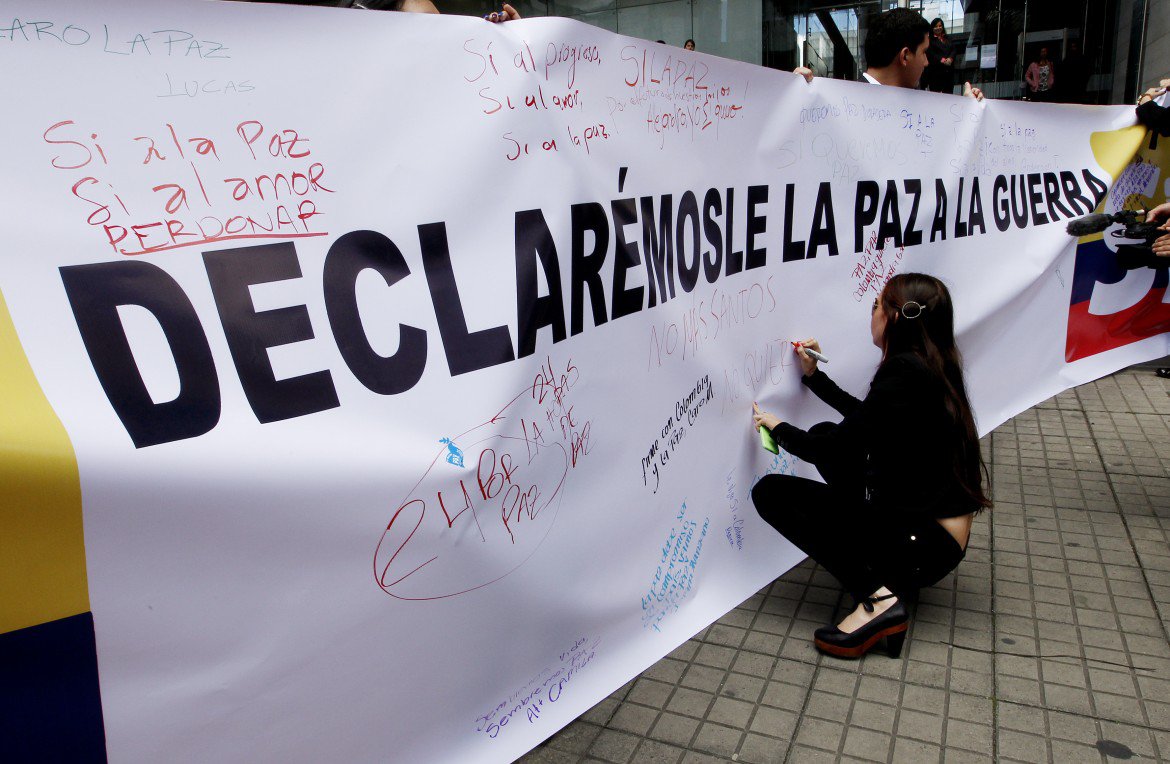Peace
After three years of negotiations, ending the armed conflict in Colombia
Details of a peace accord between Colombia and the FARC rebels are still being worked out.

The longest and bloodiest armed conflict — over 7 million victims — in Latin America is about to end. It lasted more than 50 years between the movement of the guerrilla Revolutionary Armed Forces of Colombia (FARC) and the government in Bogotá. The announcement was made here Wednesday after more than three years of mediation with Cuba and Norway for peace between FARC and the Colombian government.
The statement says that a deal was reached for “the bilateral and final agreement to put an end to the armed clashes and hostilities; abandonment of weapons; guarantees of security and the fight against criminal organizations [i.e. the Colombian paramilitaries] responsible for murders and massacres or that attempt against human rights defenders, social or political movements.”
The full substance of the agreement was to be clarified Thursday during the official announcement of the “last day of war” in Colombia that will be given in Havana by the chief negotiators, in the presence of the guerrilla leader “Timoshenko,” aka Rodrigo Londoño Echeverri; the President of Colombia, Juan Manuel Santos; and the U.N. Secretary General, Ban Ki-moon, accompanied by the presidents of the Security Council and the General Assembly of the United Nations. In addition, the representatives of the two guarantors of the peace process will participate in the ceremony is — for Cuba President Raúl Castro, and Norway’s Foreign Minister, Borge Brende — as well as representatives of countries that “were accompanying” the peace process, for Chile President Michelle Bachelet and for Venezuela President Nicolás Maduro.
Also the U.S. special representative for the peace process, Bernie Aronson, will join the crowded delegation, as well as and the European Union special representative, Eamon Gilmore, accompanied by the president of the Dominican Republic — and current president of the Community of Latin American and Caribbean States, CELAC — Danilo Medina, and the president of El Salvador, Salvador Sánchez Cerén.
The concluded agreement focuses on chapter three of the peace negotiations, or the “end of the conflict,” but in order to reach a complete cessation of the longest war in Latin America, it is necessary to reach an agreement on chapter six, which includes the implementation and verification of the agreements on the field, first the places and procedures for the guerrilla and paramilitary groups to relinquish their weapons, and second the conclusion of a referendum process to allow the population to confirm the agreements.
In January, the U.N. Security Council approved the establishment of a special political mission in Colombia to verify the bilateral ceasefire. This verification process is expected to last one year, with a possible extension at the request of the government or FARC, and will begin after the final conclusion of peace that President Santos hopes to sign by July 20, Colombia’s Independence Day. By this date, Colombia’s commander in chief hopes that the Constitutional Court will have approved the popular referendum and the implementation of all legal measures that will make possible to apply the agreements reached in Havana with the FARC.
More prudently, the guerrilla leader Timoshenko did not want to set a deadline for the final conclusion of the peace process: “Practice has proved that setting deadlines can harm the process,” even when “we’re are a hairbreadth away” from the end of the war. The FARC had declared a unilateral ceasefire in July last year, which had significantly reduced the intensity of the armed conflict. For its part, the Colombian government had refused to end ground offensive actions against guerrilla forces, but had decided to suspend its aerial bombardment.
Earlier, during the long peace negotiations, representatives of the guerrillas and the government had been able to reach a series of agreements on economic and political issues, such as agricultural development, especially in the areas controlled by the FARC; the possibility that those guerrilla fighters who have surrendered their arms can actively participate in Colombian politics; the joint fight against drug trafficking; attention to victims of the conflict and the implementation of a transitional justice system.
Originally published at http://ilmanifesto.info/dopo-tre-anni-di-trattative-finisce-il-conflitto-armato-in-colombia/ on 2016-06-23
